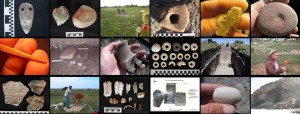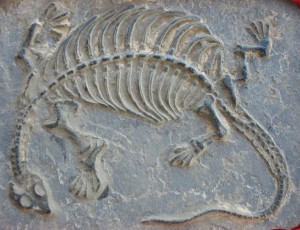home
Last modified: 18/09/2012
World renown archaeological caves sites - Mossel Bay - that yielded the earliest evidence for the origins of modern humans c.a. 160 000 years ago
Heritage resources (see Archaeology & Heritage) are protected by the National Heritage Resources Act, No. 25 of 1999 (NHRA) and may not be disturbed in any way without a permit issued by the South African Heritage Resources Agency or a Provincial Heritage Resources Authority (see www.nationalmonuments.co.za).  Heritage Impact Assessments (HIA) are now a mandatory branch of Environmental Impact Assessments (EIA) that are submitted for consideration by the Dept of Environmental Affairs and Development Planning or other relevant state department(s).
Peter Nilssen provides services in archaeological and heritage resources management.  Based in Mossel Bay, Western Province, South Africa, Peter it is ideally situated to provide services in the Western and Eastern Capes as well as the interior regions.  My trade is not restricted to this part of the country.  Mostly, my services are required for development and rezoning of land.  The requirement for archaeological and heritage related studies is triggered by various criteria as detailed in the NHRA (http://www.carm.co.za/SAHRA&HWC/Sahra_Act25_1999.pdf).
We can cover all aspects related to archaeological and heritage related studies, assessments and mitigation because professionals – colleagues –¬†from various disciplines and specializations are excited to be part of a team that works together to provide excellent service to clients, but more importantly, to the heritage of southern Africa.¬† I have started posting scientists and professionals under the colleagues category and there are more to follow.¬† Colleagues make it possible to offer a broader range of expertise, services, a stage for referrals, contacts and consultation.¬† We hope to be inclusive wherever possible and without compromising standards.
Policies
- guarantee that quotes will produce high quality reports that will be approved by the South African Heritage Resources Agency, Heritage Western Cape, other PHRAs and Belcom, and if not, we redo the work gratis.¬† To date we’ve had no come-backs.
- free and competitive quotations
- free liaising with heritage authorities on clients’ behalf
- free consultations and site meetings prior to appointment to projects
- timely production of reports at short notice at no extra charge

shell pendent, grindstones, mapping, bored stone, bifacial retouch, anvil & grindstone, bone point, excavation, cut bone, beads, excavation, mapping, pottery, screening, fauna, GIS, hammer stone, cave
Products
- completion & submission of Heritage Western Cape Notification of Intent to Develop (NID) forms
- Archaeological Impact Assessments
- Heritage Impact Assessments
- Archaeological Conservation Management Plans
- Test excavations for assessing underground archaeological occurrences
- Archaeological Mitigation (sampling, mapping, recording, excavation, monitoring, Total Station survey, conservation, laboratory analysis and comprehensive report preparation and submission and so on)
- Application and acquisition of heritage related permits from the national and provincial heritage authorities
Specialist studies include, but are not restricted to;
- built environment
- cultural landscapes
- living heritage
- oral history
- history
- visual and aesthetic
- social history
- archival and deeds research
- historical archaeology
- maritime archaeology
- rock art
- stone age archaeology (early, middle and later stone age)
- zooarchaeology
- coastal shell midden archaeology
- palaeontology
For some of the above studies, I draw on specialists who are available to work with us.¬† This does not make our services more costly.¬†ÔŅĹ
Archaeological and Heritage Impact Assessments (AIA & HIA) are the most commonly conducted work, because they are a required component of Environmental Impact Assessments.  AIAs and HIAs typically include the following:  1) site visit and archaeological survey to establish heritage status of the study area Рidentify any sites or issues of archaeological or historical importance within the development area, 2) review available data regarding sites of archaeological or historical importance in the area proposed for rezoning and/or development, 3) describe the historical and/or archaeological significance of sites that may be identified within the development area, 4) assess the impact of the proposed development on historical and/or archaeological sites described, 5) recommend mitigatory measures that should be implemented prior to and during the construction phase should any potential sites be endangered by, and uncovered by development and construction activities, 6) prepare and submit a HIA Report to the client and/or Environmental Consultant that will meet requirements set by SAHRA and/or a PHRA (usually HWC) in terms of the NHRA.
COMMENTS DISABLED
Due to high frequencies of undesirable spam and trash links, I disabled the comments facility on this site.  I would, however, like to receive continued input and comment from those with genuine interest, and sound motives.  So, if you would like to comment or get in touch, please use the contact details provided on the Contact Us page.  Apologies for any inconvenience.  Best wishes, Peter.
_____________________________________________________________________________

